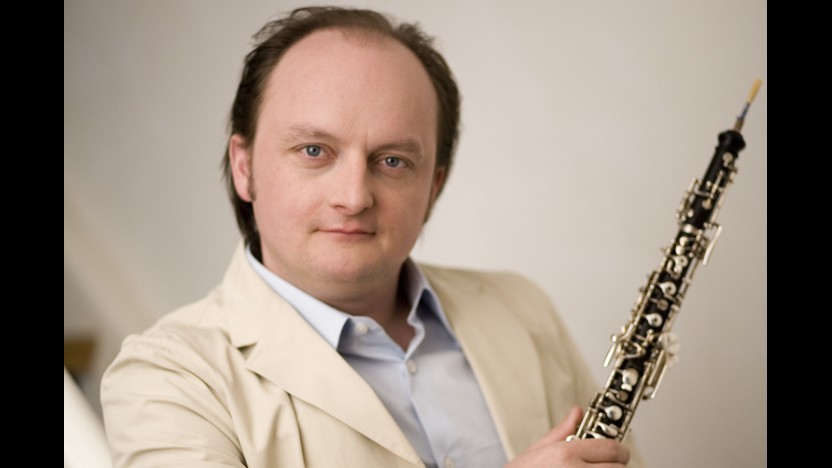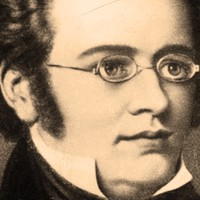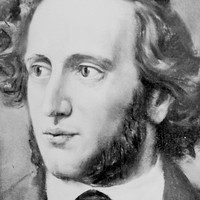Mendelssohn’s Italian Symphony with François Leleux

Sponsored By
- November 23, 2019


Sponsored By


The twenty-year-old Schubert had already composed five Haydnesque symphonies and a number of other orchestral experiments when he tried his hand at two overtures “in the Italian style.” Inspiration for the scores came from opera overtures, particularly those of Rossini, who was only five years older but already making waves throughout Europe with his bright and colorful curtain raisers. It was one of Schubert’s new overtures — probably this one in C major — that provided his long-overdue debut at a public concert, in March of 1818. He also made a festive transcription of the overture for four pianists (eight hands) at two pianos to play at a private event, indicative of the kind of rich social atmosphere that sustained Schubert’s musical life through his endless disappointments in the public sphere.
Aaron Grad ©2019

When a musicologist, in the 1950s, sought to compile the first exhaustive catalog of works by Joseph Haydn, he included this Oboe Concerto, based on the existence of parts on which someone wrote the name Haydn (obscuring the original name underneath). Musicologists now agree, for the most part, that Haydn did not compose this particular work, but how it came to bear his name remains a mystery. Surely profit motive figured in, since it was written at a time — perhaps between 1790 and 1800, judging from the style and scoring — when Haydn’s works commanded top dollar on the international market. As for the true author, one plausible option would be the oboist and composer Ignaz Malzat, who studied with Haydn’s brother Michael. Whoever wrote the Oboe Concerto in C had admirable command of the musical style practiced in Vienna in the 1790s, and they clearly knew how to maximize the singing quality of the oboe.
Aaron Grad ©2019

When Felix Mendelssohn was 19, he wrote a short piano piece as a birthday gift for his sister Fanny, marking his first entry in a new genre he called Lieder ohne Worte, or “Songs Without Words.” It may have started as something of an inside joke between talented siblings, but Mendelssohn returned to this format time and again throughout his life, eventually publishing six volumes of Songs Without Words, each comprising six selections, followed by two more volumes that reached the public posthumously. Most of the entries are simply labeled with a tempo marking in Italian, and yet the melodies are so organic and tuneful that the imagination can hardly help but make guesses as to the “missing” words. (The composer’s good friend Robert Schumann was convinced that Mendelssohn must have written actual songs and then omitted the lyrics from the printed scores.) Only a few of the movements came with any sort of descriptive heading, like the one that Mendelssohn identified as a “Venetian Gondola Song,” played third in this sequence. The voice-like nature of these wordless melodies comes to the fore in arrangements from 2009 by the German composer and oboist Andreas Tarkmann.
Aaron Grad ©2019
 Watch Video
Watch Video
After leaving stormy Scotland, which inspired the Hebrides Overture and the Symphony No. 3 (“Scottish”), the 20-year-old Mendelssohn continued his grand tour in Italy, sparking a symphony that, according to the composer, was “the jolliest piece I have ever done.”
Mendelssohn sketched part of that symphony while in Italy in 1830–31, and he completed the work in 1833, using it to fulfill a prestigious commission from the Philharmonic Society of London, the same group that had commissioned Ludwig van Beethoven’s Ninth Symphony. Mendelssohn made substantial revisions to the symphony’s final three movements in 1834, and he intended to revise the first movement, too, but he postponed that task and finally suppressed the symphony altogether. The work was published posthumously as the Symphony No. 4, although it was actually composed third. This performance restores the original conception of the 1833 version, using a critical edition prepared by the conductor Christopher Hogwood.
Mendelssohn’s bright impressions of Italy are borne out by the bouncing themes and running triplet pulse of the Allegro vivace movement that opens the symphony. Still, this is no mere musical “postcard” — just note the finely wrought development section, which shows the work of a composer equally fluent in Johann Sebastian Bach’s formal counterpoint and Beethoven’s obsessive manipulation of recurring themes. The Andante con moto may have been influenced by a religious processional Mendelssohn witnessed in Naples, an image that fits with the movement’s walking bass and grave harmonies.
The moderate pace and smooth flow of third movement resemble the symphonic minuets of Mozart and Haydn, as opposed to the more rambunctious scherzos popularized by Beethoven. In the contrasting trio section, the horns and bassoons indulge in spacious phrases that impart an outdoor quality, until the mood turns momentarily menacing with the interjection of trumpets, timpani, and a stern minor key.
For the symphony’s whirlwind finale, Mendelssohn borrowed lively rhythmic patterns from Italian folk dancing. He named the movement after the saltarello, a dance from central Italy defined by its fast triplet pulse and its leaping movements.
Aaron Grad ©2023
Can't attend any of these performances? Join us on the West Side of Saint Paul on Thursday, November 21 at 7:00pm
Get driving directions and find nearby parking.
Find dining options close to the venue.
View seating charts to find out where you'll be seating.
SPCO concerts are made possible by audience contributions.
For exclusive discounts, behind-the-scenes info, and more:
Sign up for our email club!
